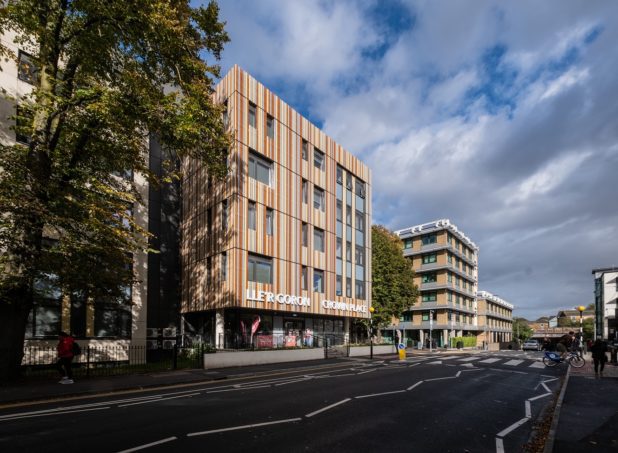
With all eyes on Glasgow ahead of this year’s UN Climate Change Conference, the spotlight on sustainability continues to grow. Net-zero pledges, climate ambitions and environmental considerations will all top the list of priorities to be discussed by leaders from around the globe this October.
For the built environment, in the lead up to and following COP26, there is an opportunity to accelerate meaningful change by reducing environmental impact. Accounting for an estimated 40% percent of the UK’s total carbon emissions, the responsibility sits firmly on our industry’s shoulders to address this issue. In particular, the excessive production of construction and demolition waste.
We sat down with our Plymouth Office Director, Ross Pomery, to explore what can be done to effectively reuse & repurpose existing buildings to contribute to the reduction needed.
What needs to be considered when planning the reuse or repurpose of an existing building?
Successful, effective, and efficient reuse of a building is best realised by careful and diligent design review at the concept stages of a project. A full understanding of the building structure can then be appreciated, including its history and any modifications over time are key parameters and pieces of the engineering review jigsaw puzzle.
Also, for us to fully appreciate existing conditions there needs to be appropriate levels of commitment by Clients to undertake investigation to enable assessment to be made. This lets us confirm such parameters such as load paths, frame strength, ground conditions, contamination risk, foundation capability and drainage routes and condition.
From a structural perspective, how much scope is there for change when it comes to an existing building?
It should be remembered that although anything is possible, careful and considered structural engineering design will lead to the successful repurposing of a building. From experience, we have found that there should be a common desire to work with the existing building wherever possible and introduce structural modification where genuine enhancement can be realised and proven to be beneficial. This commonly includes creation of a design feature, works to shorten the construction programme or changes to offer project benefits.
A repeated design objective is to ensure the existing structure is theoretically tested to ensure any spare capacity is fully utilised before considering costly strengthening works.
Additionally, the existing structural grid should be embraced and integrated in proposed layouts, only being altered where the proposed design requires a greater unobstructed layout. Existing penetrations such as floor voids and service risers should also be reviewed in a similar manner, repurposing their use wherever possible.
Is there a system or framework you would suggest following when exploring the potential reuse of existing buildings?
Increased design investment is the main takeaway. This allows you to review and appreciate the existing structural form and creates a base point for onward review.
It may seem obvious, but efficient structural review and design is important as is adopting a ‘lean’ approach to building materials. For example, this could involve specifying deeper beams with lighter tonnage characteristics or exploring material replacements, such as alternatives to cement and applying local recycled or secondary aggregates within concrete mixes.
Exploiting full load utilisation of the existing structure is key, a starting point for an existing building being the need to determine remaining structural redundancy. This is important as it has the potential to offer greater benefits to the proposed design as ‘unlocking existing load potential’ is a means of enhancing design with net zero carbon impacts.
On the topic of embodied carbon, what solutions would you suggest for mitigating this?
The main actions our industry can take to reduce embodied carbon would be to consider building less by way of refurb, retrofit and reuse of existing assets; building lighter by putting a more emphasis on structural review; building low carbon by specifying sustainable materials and finally building for the future by assessing end of life and structure adaptability at the start of any development.
The relevance and advantages of each of these actions have greater potential weighting for different projects, therefore should be reviewed on a case-by-case basis.
Here at Jubb, we can offer high value advice at all stages of the project cycle from site acquisition and planning, through detailed design and procurement and onto asset maintenance and disposals.